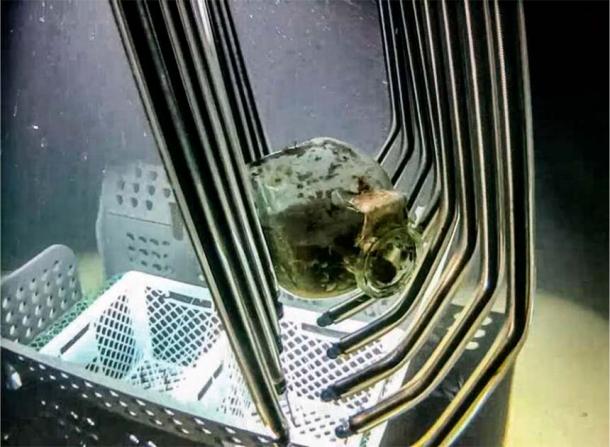Inputs by Alekhya Chavan
In 2012, a shipwreck (a ship that has been destroyed, or sunk in a body of water) called Capo Corso 2 was found underwater between Capo Corso and the island of Capraia, Italy. The ship is found to be about 1,900 to 2,000 years old, dating back to the end of the 1st century or the early 2nd century AD. It was carrying cargo (goods /commodities transported by a ship) consisting of glass and thousands of brown tableware (utensils and other items used for serving and eating meals at a table) that had been worked on.
In 2014, a project called “Return to Antikythera” began with a team of archaeologists from different countries, led by the Woods Hole Oceanographic Institution of Massachusetts and in cooperation with the Greek Ephorate of Underwater Antiquities. They used underwater cameras to create a 3D map of the Antikythera shipwreck site. The bad weather made it challenging to work, so they had only four days for diving. Still, they managed to recover some artifacts from the surface sediment, showing that much of the ship’s cargo was still preserved under the seabed.
The team has filmed part of its work here.
“Return to Antikythera” is a multi-year underwater archaeological project exploring the ancient Antikythera Shipwreck off Greece’s Antikythera island. It aims to recover artifacts and study ancient trade and culture using advanced technologies.
The project continued in 2015, and the team spent 40 hours diving at the site. They used different equipment to carefully dig and examine the artifacts underwater. Metal detectors helped them find buried objects. They found over fifty new artifacts, such as a bronze armrest, remains of a bone flute, a piece from an ancient board game, luxury ceramics, and glassware. Some of these items were studied on the seabed(seafloor surface) before being brought up for further examination.
They also discovered fifteen lead artifacts, like a salvage ring, anchor components (metal objects used to hold ships), and parts of the ship’s hull sheathing (Ship plating). A salvage ring is a ring used in underwater operations to recover sunken objects from the sea or other bodies of water.
These items were examined to make out where the lead was from, which could reveal where the ship was originally from.
They also found pieces of precious mosaic glass (coloured glass), clear glass, a blue bead, and a decorated table jug. There was also a section of bronze furniture that might have been part of a throne, and they found wooden remains from the ship’s body.
The team collected DNA samples from the wooden remains and entire ceramic vessels, as well as sediment samples to analyze grain starch and phytoliths(tiny structures in the plant cells). This was to know about the ship’s origin and the route it took on its final journey. The artifacts were taken to a laboratory in Taranto, Italy for scientific analysis, degradation study(decline), and restoration.
Based on their findings, the ship likely came from a port in the Middle East, possibly Lebanon or Syria. The researchers are hopeful to continue the project and explore more in the future because the shipwreck is valuable and has already provided captivating discoveries.
The report was released by the Italy’s National Suprintendency for Underwater Cultural Heritage two days ago.
Featured Image credits: M.Añò-V.Creuze-D.Degez / Soprintendenza Nazionale per il Patrimonio Culturale Subacqueo

